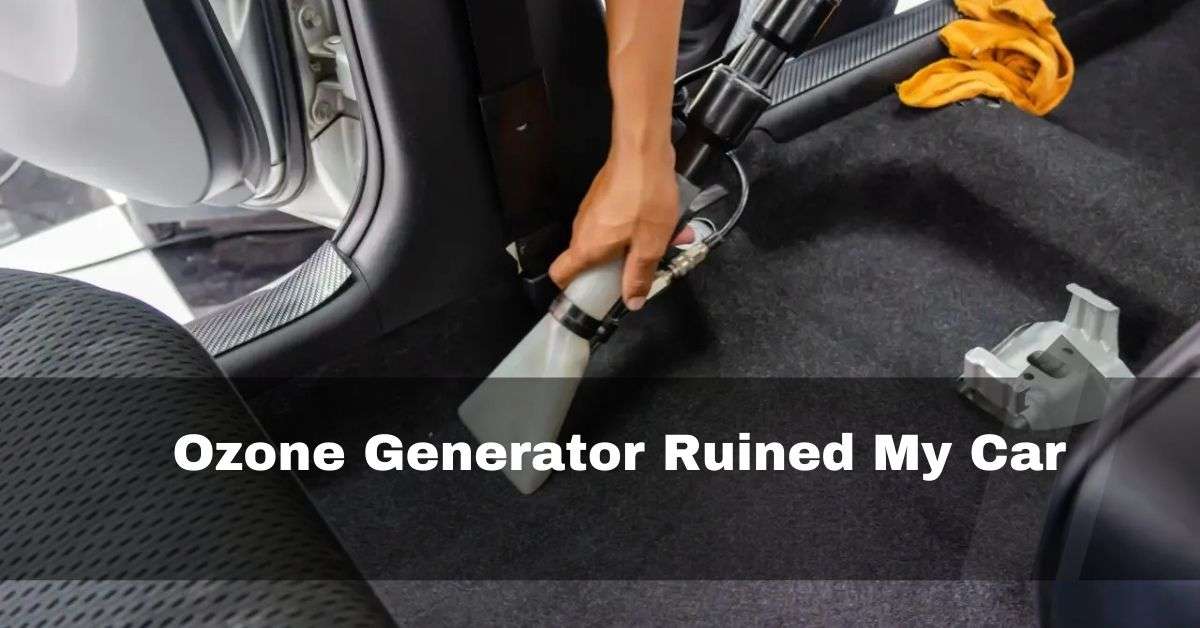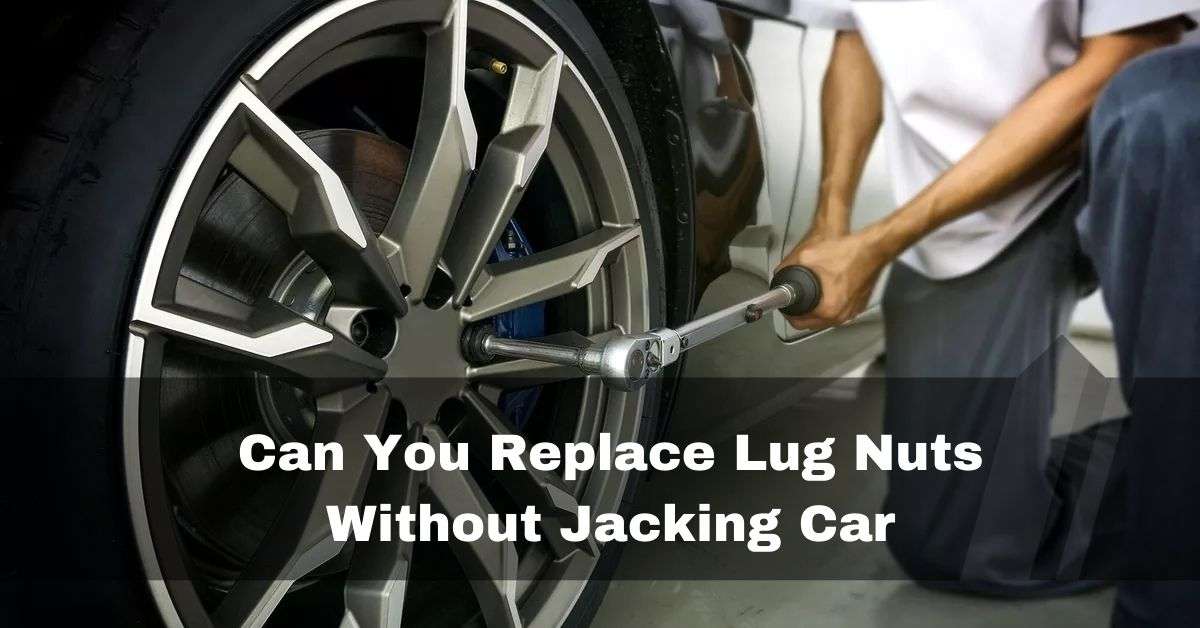People are interested in ozone makers because they are said to be able to get rid of smells and clean the air. But my experience with an ozone machine taught me a lesson I want to share.
Discover the unintended consequences of using an ozone generator in your car—personal experience reveals the potential damage caused when safety measures are overlooked.
In this piece, I’ll talk about what caused the damage to my car and the risks that can come from misusing ozone generators.
Table of Contents
The Promise Of Ozone Generators:
Ozone producers make ozone, which is a molecule made up of three oxygen atoms. People know that ozone can eliminate smells, germs, viruses, and other harmful air pollution. Many people use these tools to make places smell better, remove lingering odors, and make the air fresher.
How An Ozone Generator Turned Car Odor Removal Into A Costly Mistake:
Based on its reputation for eradicating scents, I tried an ozone generator to rid my automobile of a persistent and unpleasant stench. I followed the directions to put the device in my car and set the timer for a decent amount of time.
Ozone generators should not be utilized in enclosed environments like cars, something I just learned. Ozone neutralizes odors but reacts with ambient elements, causing unexpected effects.
Potential Damage Caused By Ozone Generators In Cars:
As the ozone generator worked, it affected automobile parts. I noticed the dashboard, upholstery, and rubber seals deteriorate over time. Ozone’s lovely fragrance became poisonous and chemical-like.
To my dismay, the damage went beyond smell. The dashboard became sticky, the upholstery lost its shine, and the car window rubber seals split. My car’s appearance was irreparably damaged.
1. Deterioration Of Rubber And Plastic Components:
Will an ozone generator damage plastics? If ozone is present in the air for a long time, it can damage rubber seals, the dashboard, and the steering wheel. It usually means it’s cracking, fading, or breaking quickly.

2. Damage To Upholstery And Carpeting:
High quantities of ozone can harm car upholstery and carpeting. Ozone can deteriorate car upholstery fibers, making them more susceptible to harm. Long-term ozone exposure weakens fabric fibers, speeding up material breakdown in upholstery.
3. Electrical System Damage:
The ozone also hurts the electrical parts in your car. Wire insulation, which is usually made of plastic, wears out quickly. If this happens, the “check engine” light might come on, and the power could have a problem.
4. Adverse Effects On Leather Upholstery:
Can ozone damage leather? Leather upholstery resists ozone but can dry out, crack, and change color. Ozone oxidizes leather, making it dry, cracked, discolored, and rustier.
- Ozone dries out automobile materials, weakening them.
- Plastic and leather seats can break, and upholstery can tear or split.
- Inner parts like textiles and polymers can change color due to ozone exposure.
5. Corrosion Of Metal Parts:
Because ozone is corrosive, it has the potential to cause damage to metal components in your vehicle, which may result in costly repairs.
Factors Leading To Ozone Generator Damage In Cars:
Having used ozone generators myself, I can attest that while they eradicate odors, improper use or safety precautions can damage your automobile.
1. The Pitfalls of Improper Ozone Generator Use
If you do what I did and misuse or overuse an ozone generator, you can damage the inside of your car by exposing it to too much ozone.
2. Inadequate Maintenance And Cleaning After Treatment:
The ozone can stay in your car longer and do more damage if you don’t clean and take care of it.
3. Poor Quality Or Faulty Ozone Generator:
Things that don’t work right or are broken can release different amounts of ozone, which could be harmful. A lot of people I know use ozone devices that could be better.

4. Unsuitable Placement Of Ozone Generator In Vehicle:
It’s possible for the ozone not to reach all parts of your car if you put the ozone generator in the wrong spot.
5. Lack Of Ventilation In Vehicle During Treatment:
Without proper ventilation, dangerous ozone can build up during ozone treatments. These processes may produce hazardous chemicals and worsen automobile interior damage. Ozone generator exhaust fumes might be deadly if not adequately evacuated.
6. Excessive Concentration Levels Of Ozone Used:
Ozone can do damage that wasn’t meant to happen if you use more of it than is proper. Please don’t do it; I did it, too, and it’s hazardous.
Diagnosing And Repairing Ozone-Induced Damage In Your Vehicle:
Ozone can harm your car’s leather, upholstery, electrical systems, and rubber and plastic parts. I also deal with these problems by following these steps:
1. How To Restore Rubber And Plastic Components?
- Use a mild, soapy solution made just for your car parts to clean broken rubber and plastic parts.
- To bring the things back to life, use the right restoration tool.
- They should be repaired often to ensure these parts last as long as possible.
2. How To Address Electrical System Damage?
- First, make sure everyone is safe by disconnecting the car’s power.
- Look for corrosion in the connections and clean them well.
- Use clean water to rinse the damaged areas and ensure they are dry before reattaching the battery.
- Connect the car battery again, making sure all the connections are tight.
3. How To Revive Your Upholstery?
- To bring old furniture back to life, use a fabric restorer.
- If needed, fix or replace fabric parts that can’t be fixed.
4. How To Restore Leather?
- Use the right leather cleaner to clean leather furniture.
- To restore and protect the leather, use a suitable leather conditioner.
- Fix any damage that you can see, like cracks or spots.
Prevention Strategies: How To Use The Ozone Generator Safely?
I understand the need to utilize ozone devices safely to avoid damage. I follow these tips. We prioritize your safety, so here are all the ways to protect your ozone machine:
- Choose an ozone generator that works for you and follow the instructions.
- Follow the device’s manufacturer’s instructions.
- Airflow should be sufficient before, during, and after ozone treatments.
- Keep your automobile clean and remove ozone treatment residue.
- Check ozone levels with a meter and make adjustments.
- Store the ozone generator properly while not in use to prevent harm.
- Regularly replacing the oil and air filter improves the air quality inside your car by removing outside odors.
Why You Shouldn’t Use Ozone To Remove Odors From Cars?
I know what happened because I own a car, so I’m giving you this information to help you keep yourself and your vehicle safe.
Reason #1: Bleaching Effects Of Ozone:
Ozone generators eradicate scents well. However, this is troublesome. They can bleach and affect the color of automobile rugs, leather, upholstery, and plastics, which is a significant issue. Ozone whitens since it’s a solid oxidant.

Reason #2: Potential Harmful Health Effects:
Ozone machines work, but they also give off ozone gas, which is harmful to breathing in large amounts. It is terrible for your health, especially your lungs when there is a lot of ozone. If you are around a lot of ozone, you may cough, have sore throats, have lung pain, and have trouble breathing.
FAQs:
1. How Long Does It Take For The Ozone Smell To Go Away?
The smell of ozone often goes away in an hour after a treatment. Some people don’t like it, but it mostly cleans the air.
2. How Long Should You Run An Ozone Generator In A Car?
The longer an ozone maker needs to be in a car, the worse the smell has to be. It takes between 30 minutes and two hours most of the time. Make sure there is enough airflow and safety measures.
3. Can An Ozone Machine Damage The Interior Of A Car?
Yes, ozone can break down carbon-based materials. However, the amounts coming from smaller machines are generally low enough to damage a car’s wiring or interior.
4. Will The Ozone Generator Damage The Paint?
Yes, ozone can mix with things like rubber parts and oil paints. Before using an ozone generator, it’s best to cover or remove easily broken items, like oil paintings and rubber hoses. This will keep them from getting hurt.
Conclusion:
Using an ozone machine to clean the air in your car and eliminate smells can be beneficial. But if you use them right or enough, they can help the leather seats, metal parts, and electrical systems inside your car. If you know what hurts your vehicle and how to stop and fix it, you can use ozone makers without risking its health.
References:
- https://www.automotivefox.com/ozone-generator-ruined-my-car/
- https://blogproautomotive.com/ozone-generator-ruined-my-car/
- https://www.pureline.com/2-reasons-why-you-shouldnt-use-ozone-to-remove-odors-from-cars/
- https://vehiclesmasters.com/ozone-generator-ruined-my-car/
- https://sandiego-autodetail.com/car-ozone-treatment-101/



